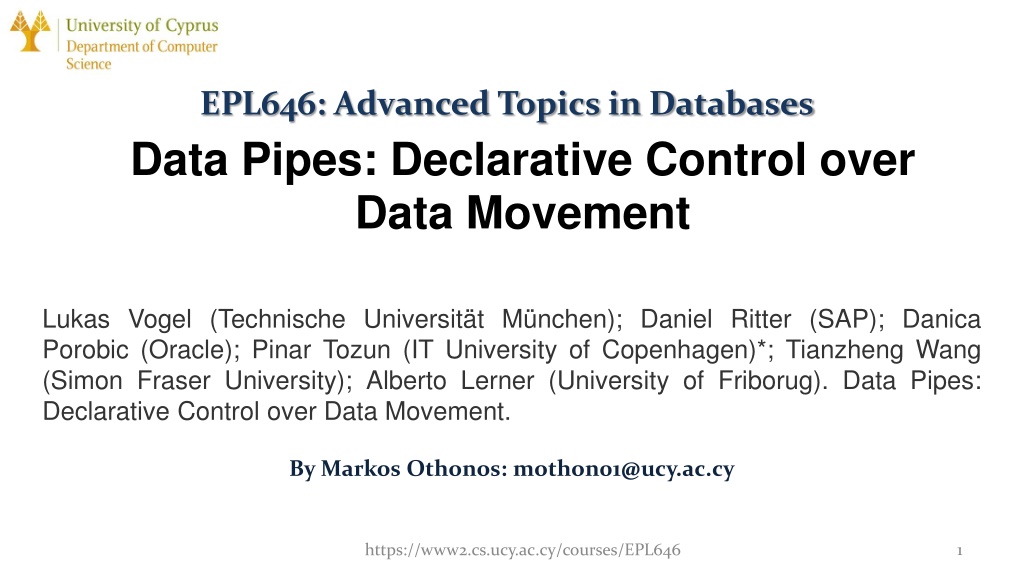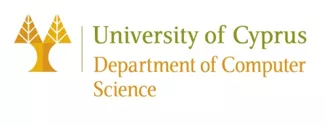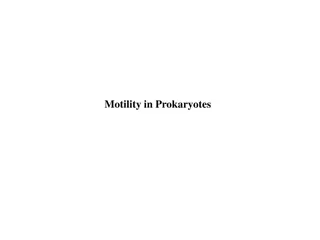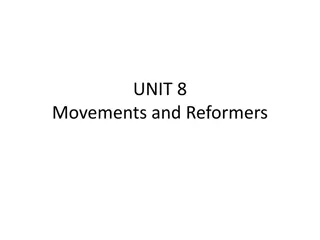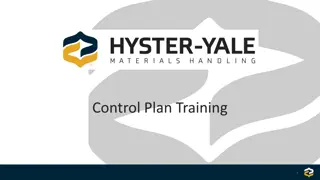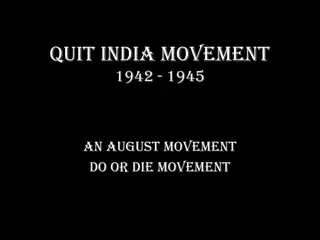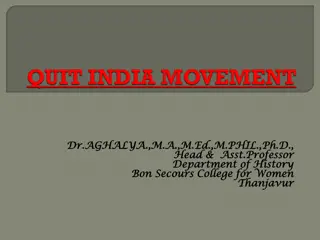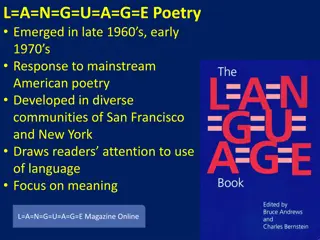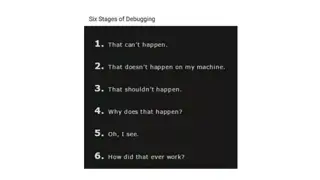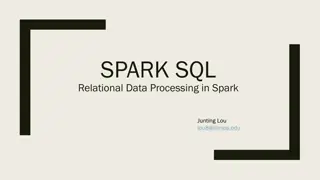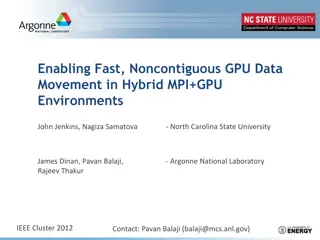Declarative Control over Data Movement
Data Pipes delve into advanced database topics discussing different types of memories, data transfer shortcuts, cache technologies, and useful optimizations. Explore the intricacies of handling data movement efficiently in modern data center trends.
Download Presentation

Please find below an Image/Link to download the presentation.
The content on the website is provided AS IS for your information and personal use only. It may not be sold, licensed, or shared on other websites without obtaining consent from the author.If you encounter any issues during the download, it is possible that the publisher has removed the file from their server.
You are allowed to download the files provided on this website for personal or commercial use, subject to the condition that they are used lawfully. All files are the property of their respective owners.
The content on the website is provided AS IS for your information and personal use only. It may not be sold, licensed, or shared on other websites without obtaining consent from the author.
E N D
Presentation Transcript
EPL646: Advanced Topics in Databases Data Pipes: Declarative Control over Data Movement Lukas Vogel (Technische Universit t M nchen); Daniel Ritter (SAP); Danica Porobic (Oracle); Pinar Tozun (IT University of Copenhagen)*; Tianzheng Wang (Simon Fraser University); Alberto Lerner (University of Friborug). Data Pipes: Declarative Control over Data Movement. By Markos Othonos: mothon01@ucy.ac.cy 1 https://www2.cs.ucy.ac.cy/courses/EPL646
Introduction Datacenter trends: increasing usage of NVMe - low latency SSD and Persistent Memory. Each device has different access size and different libraries (or APIs). The programmer may need to be exposed to low level details to write an optimized program! Small, hidden tweaks may have tremendous impact on the performance. 2
Contents Different types of memories Data transfer shortcuts Challenges of shortcuts Application of shortcuts on ExternalSort Data Pipes 3
Cache Technology SRAM. LLC MBs, L2 Hundreds of kilobytes. Cache line 64 Bytes. Very fast. Very expensive. 4
DRAM Technology DRAM. Size per Device tens of GBs. Access size 64 Bytes (cache line size). Generally good performance with all access paterns. Expensive. 5
Optane DCPMM Technology 3DXPoint. Size per Device hundreds of GBs. Access granularity 64 Bytes. Media Access granularity 256 Bytes. Can be inserted in DIMM slots! Excels at large sequential accesses. Less expensive than DRAM (per GB). 6
NVMe - SSD Technology Flash Size per Device TBs Access granularity 4KBs 7
Cache Shortcuts CLDEMOTE: Send Cache line to higher level cache (LLC). CLFLUSH: Send cache line directly to the Main Memory. Explicit operations like these can help the programmer with optimization. 8
Useful Shortcuts DDIO: Allows PCIe writes directly to the LLC, in a small dedicated section. Lowers latency even further, no need to access main memory! Contention in the LLC-DDIO region is a big problem. DDIO Section LLC 9
Useful Shortcuts I/OAT: Move data between DRAM and PMem. The DMA engine handles the data movement. No need to involve cores in this matter. 10
Challenges To use DDIO optimally, it is advised to change the value of a hidden msr (default value: 2*). May largely reduce LLC misses for some workloads. It is unreasonable to expect an average programmer to know this. 11 *default value on skylake and cascade lake is 0x600 -> 2 bits set. Link: https://www.usenix.org/system/files/atc20-farshin.pdf
Challenges I/OAT works sub-optimally when transferring data from DRAM to Pmem. I/OAT uses Direct Cache Access to aid with the data transfer, but this causes write amplification (3-4x) when transferring from DRAM to Optane! Is there another msr that disables DCA? 12
External Sort Run 0 of external sort would require: Fetch pages from SSD bring them to the M.M. Fetch pages from M.M to LLC. Move pages from LLC to L2. Sorting Move sorted pages from L2 to LLC. Move sorted pages from LLC to M.M. Write sorted page to SSD, if buffer pool cannot hold it. 13
External Sort Excessive data movement! Shortcuts would drastically reduce it. We want to avoid as many I/Os as possible! Keep recently sorted pages close. How? PMems. Much larger capacity than DRAM - Comparable performance. 14
External Sort Bring pages directly to LLC through DDIO. Move pages from LLC to L2. Sorting Flush sorted pages to DRAM. 15
External Sort Spill sorted page to PMem (I/OAT DCA off). Bring sorted pages from PMem to LLC (I/OAT DCA on). Bring sorted pages to L2. Merge Flush to DRAM. Repeat until sorted 16
Data Pipes Implemented as a C/C++ descriptor/object. Aim: Call shortcuts in a declarative manner. Use shortcuts in their optimal configuration. Further optimizations through explicit programming. Aid programmer with obscure types of memories. 17
Data Pipes Straightforward flavor Declarations through resource locators Link locators with a Pipe. Transfers are blocking. 18
Data Pipes Inversion of control flavor Pipe running as a runtime subprocess. Allows asynchronous data movements. Completion of data movements is communicated through futures vector. Can create multiple pipes to run in parrarel! 19
Data Pipes An OS-supported flavor Approach to pread/pwrite. Epoll to signal when pipe is ready for a new transfer. OS will manage threads priorities. 20
Conclusion Many x86 systems have already established, obscure mechanisms that can accelerate data intensive workloads. Data pipes help the programmer to use said mechanisms. Data pipes expose the difficult to manipulate configurations that some of the discussed shortcuts use. Transparency of where and how the data is moved.
EXTRA SLIDES https://www.cs.ucy.ac.cy/courses/EPL646 23
DDIO Improvement https://www.cs.ucy.ac.cy/courses/EPL646 24
